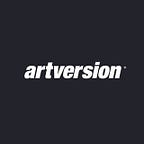Adopting a Human-Centric Design Mindset
Design strategies may often be understood as a process. The formation of a wireframe to website, implementing UI/UX elements, and the collaborative nature of a project’s fruition is in of itself, a procedure. Yet, when design becomes human-centric, meaning the user is placed at the core of an experience, design takes on a new embodiment: a mindset.
When the design process becomes reconceptualized into a new way of the creating experiences, it not only shifts importance back to the user, but it also enables a company to enhance their workflow and positioning. Shifting a procedure into a mindset offers a world of enhanced opportunities and a much more liberating feeling in the design process.
What Does Human-Centric Design Entail?
Human-centric design can be broken down into 5 pillars: empathize, define, ideate, prototype, and test. The first pillar is vital because it sets the stage for the human element of design, and the rest to follow suit.
Empathize: learning about your audience is vital, and fully grasping an understanding of what their goals and needs has to take a clear focus.
Define: once the connection to an audience feels sturdy, defining the goals that match that of your users is key.
Ideate: planning solutions to align with a human-centric experience based on what your user will want.
Prototype: creating an interface that your users or consumers enjoy based on ideation of interface designs to uplift your audience.
Test: The best way to ensure your audience is content with your interface and design is through user testing to attain feedback on pain points and touch points to continously elevate the experience.
With all these different factors and inner workings, the user is at the centerfold while the optimal solutions and strategies surround the user.
More Than Merely Problem Solving
When design fulfills a human approach, there will unequivocally be a stronger user engagement. Human-centric design removes the idea that design is merely about problem solving, and although that is a side to development that is highly important, it shouldn’t overshadow the overall experience.
A human-centric design mindset can revolutionize any company, brand, and design agency which allows them to keep up with the evolving tastes of audiences. Knowing your audience allows there to be a clearer understanding of how to design an interface or service which in turn, eliminates scraping projects or designs which could occur without knowing your user and without their feedback to help guide the design process. The human perspective is important, and a company cannot effectively expand if they do not readjust to fit into a consumer’s ever-evolving preferences and behaviors.
Humanizing Business Approaches
The way the world has shifted to alter with the changing times has encouraged many businesses to fulfill a humanizing take to sales. A human-centric experience allows a company’s ethics to be strengthened with trust to build a relationship with a brand, and a company to fulfill what the user wishes.
Newer design trends such as experiential design has been prominently pronounced itself as an asset. It allows innovation to unfold with a new experience for their user that is interactive, personalized, and unique. When users feel as though an experience is tailored made for them, it increases loyalty because of that layer of trust. Design, then becomes driven by added engagement that prioritizes the experience for the user.
Thus, by adapting human-centric design and focusing on it as a mindset, rather than simply a process, companies can revolutionize their way of thinking that could boost their conversions.
The mindset shifts from:
“How can we make more sales?” to “How can we engage our consumers to love our products/services within a crafted experience to drive conversions?”
Or
“Why are our bounce rates so high?” to “What components to our design is frustrating our users?”
New ways of thinking are effective, productive, and ensure a brand is not simply blending in with every other.
Intertwining Creativity Within Collaboration
Understanding the user perspective is not limited to simply benefitting your audience, but it also propels productivity for digital design agencies as well. When human-centric design is at the core of every project, it allows the opportunity for agility, iterations, and a collaborative workflow to translate into the outcome of a design.
With agility centered at the core of a workflow, collaboration between agency and a client creates an oscillation of ideas within feedback in the prototype and development process. A sense of collaboration is another layer to that humanizing perspective because it encourages a feel of unity. With modes of constant communication that allow feedback to take a breath of life, motivations and goals of the user are formed to enliven the experience.
All Else Will Fall into Place
A clear definition and process of ideation allows the remaining steps of development to have a sharp vision. Once there is a clear understanding of what your users preferences are, and what design possibilities could create an unforgettable user experience, prototyping and testing will follow suit.
Attaining insight on what your users look for in design early on, can even shorten the prototyping process with less overhead since those workings have been started with the user already in mind. A collaborative process also allows solutions to be developed, and a quick mending of errors with feedback from a human perspective to understand the motivations of those utilizing the design.
Data and details of what entails a successful design, are important, however what becomes much more essential is the human experiences and emotions that are felt within a digital space. The world isn’t planning on slowing down anytime soon when it comes to technological and digital advancements, so our mindsets in the development process, should then, evolve with it.
